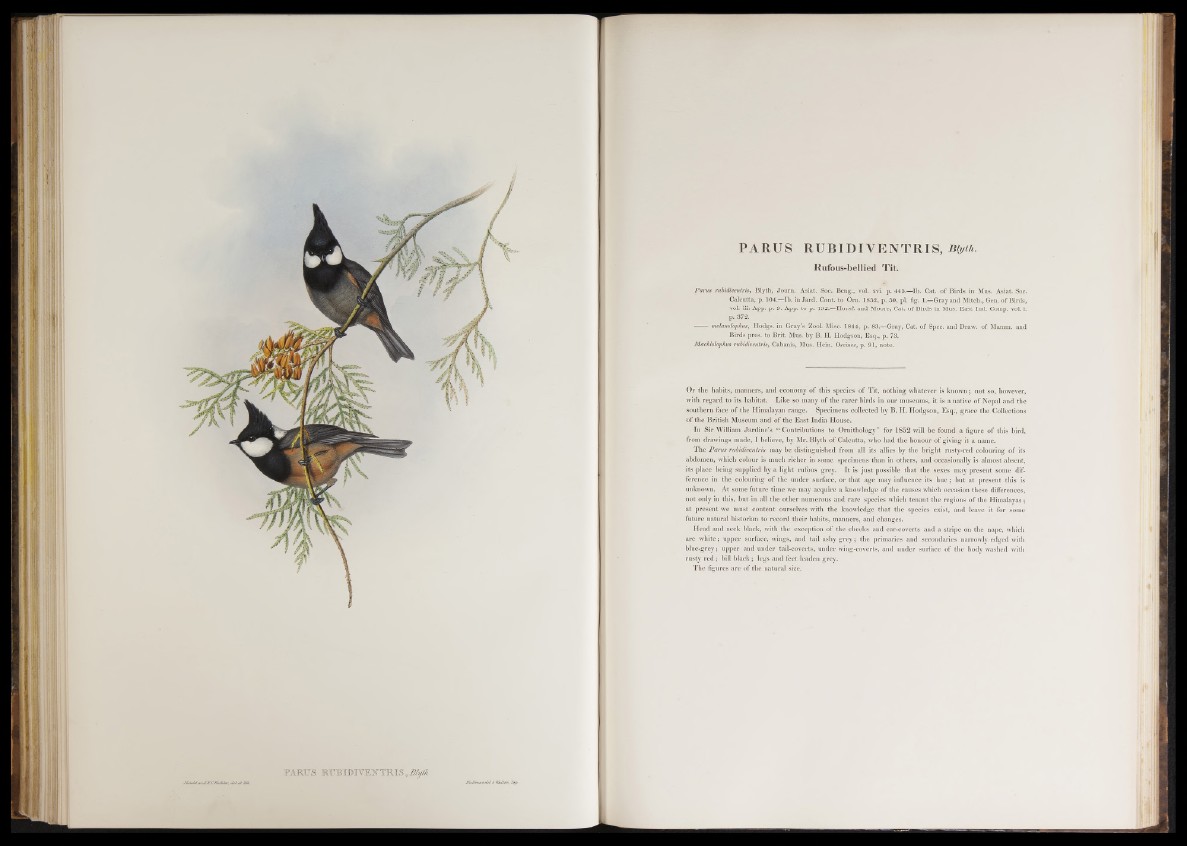
FARITS RUBIBIVEÎTTRIS, Blÿtk
P A R U S R U B I D I V E N T R I S, Biyth.
Rufous-bellied Tit.
Parus rubidiventris, Blyth, Journ. Asiat. Soc. Beng., vol. xvi. p. 445.—lb. Cat. of Birds in Mus. Asiat. Soc.
Calcutta, p. 104.—lb. in Jard. Cont. to Om. 1852, p. 50, pi. fig. 1.—Gray and Mitch., Gen. of Birds,
vol. iii. App. p. 9. App. to p. 192.—Horsf. and Moore, Cat. of Birds in Mus. East Ind. Comp. vol. i.
p. 372.
melanolophus, Hodgs. in Gray’s Zool. Misc. 1844, p. 83.—Gray, Cat. of Spec, and Draw, of Mamm. and
Birds pres, to Brit. Mus. by B. H. Hodgson, Esq., p. 73.
Machlolophus rubidiventris, Cabanis, Mus. Hein. Oscines, p. 91, note.
Of the habits, manners, and economy of this species of Tit, nothing whatever is known; not so, however,
with regard to its habitat. Like so many o f the rarer birds in our museums, it is a native of Nepal and the
southern face of the Himalayan range. Specimens collected by B. H . Hodgson, Esq., grace the Collections
'of the British Museum and of the East India House.
In Sir William Jardine’s “ Contributions to Ornithology” for 1852 will be found a figure o f this bird,
from drawings made, I believe, by Mr. Blyth of Calcutta, who had the honour o f giving it a name.
The Parus rubidiventris may be distinguished from all its allies by the bright rusty-red colouring of its
abdomen, which colour is much richer in some specimeus than in others, and occasionally is almost absent,
its place being supplied by a light rufous grey. It is just possible that the sexes may present some difference
in the colouring of the under surface, or that age may influence its h u e ; but a t present this is
unknown. At some future time we may acquire a knowledge of the causes which occasion these differences,
not only in this, but in all the other numerous and rare species which tenant the regions of the Himalayas;
a t present we must content ourselves with the knowledge that the species exist, and leave it for some
future natural historian to record their habits, manners, and changes.
Head and neck black, with the exception o f the cheeks and ear-coverts and a stripe on the nape, which
are white; upper surface, v?ings, and tail ashy g rey ; the primaries and secondaries narrowly-edged with
blue-grey; upper and under tail-coverts, under wing-coverts, and under surface of the body washed with
rusty r e d ; bill black; legs and feet leaden grey.
The figures are of the natural size.